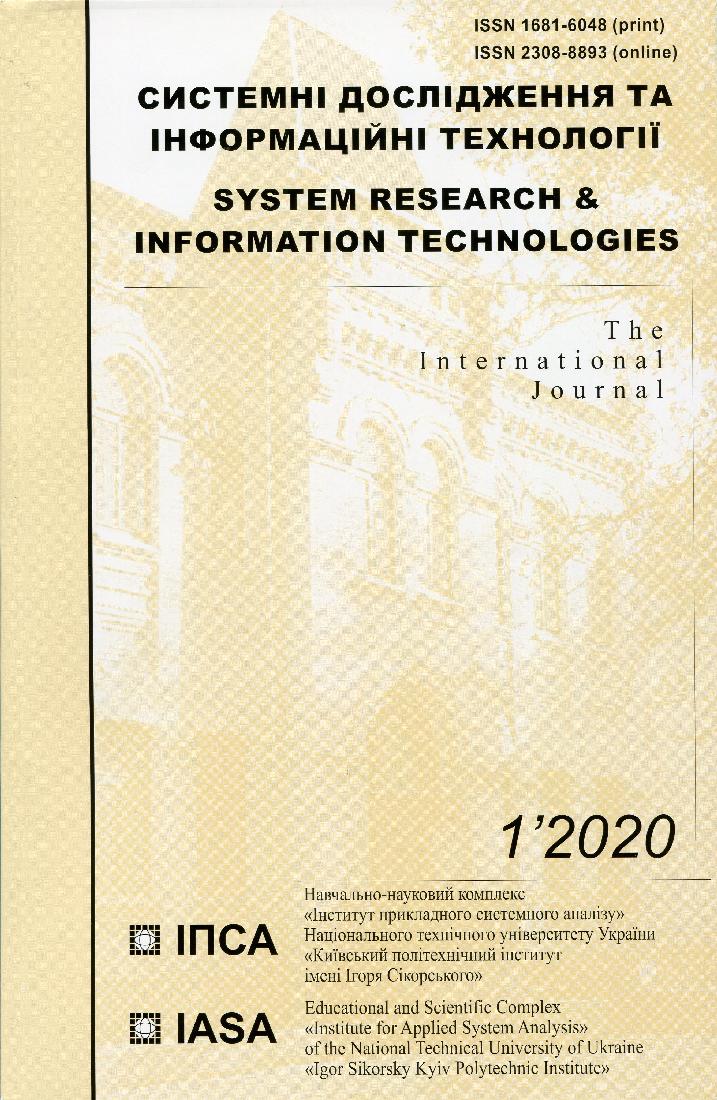Reconstruction theorem for certain dynamical systems
DOI:
https://doi.org/10.20535/SRIT.2308-8893.2020.1.11Keywords:
original system, differential model, reconstruction, observed variable, candidate modelAbstract
A theorem which gives a rigorous justification for using the differential model to obtain an original system that describes a real physical process is proved. The theorem can be used to reconstruct the model from a single observed variable, the presence of which allows us to obtain a differential model. In the differential model, the variables that are missing are replaced by the time derivatives of the observed variable. The existence of relations that connect the original system and the differential model allows the transition from the differential model to the original system. In this case, several original candidate models can be obtained. As a result, the researcher can choose the model that most fully reflects the physics of the process. The proved theorem can also be used to simplify the previously obtained model, which probably contains redundant terms.References
Aguirre L.A. Modeling nonlinear dynamics and chaos: A review / L.A. Aguirre, C. Letellier // Mathematical Problems in Engineering. — 2009. — 238960. – URL: https://www.hindawi.com/journals/mpe/2009/238960/
Nyarko E. K. Solving the parameter identification problem of mathematical models using genetic algorithms / E. K. Nyarko, R. Scitovski // Applied Mathematics and Computation. — 2004 . — Vol. 153. – P. 651–658.
Kabanikhin S. A parameter identification problem for the mathematical model of HIV dynamics / S. Kabanikhin, O. Krivorotko, D. Yermolenko // 2017 International Multi-Conference on Engineering, Computer and Information Sciences (SIBIRCON). — IEEE. — Novosibirsk.
Ljung L. System Identification – Theory For the User / L. Ljung. — N.J.: PTR Prentice Hall, 1999. — 609 p.
Shvets A.Yu. Peculiarities of Transition to Chaos in Nonideal Hydrodynamics Systems / A.Yu. Shvets V.O. Sirenko // Chaotic Modeling and Simulation (CMSIM) Journal. — 2012. — N 2. — P. 303–310.
Moon F.C. Chaotic Vibrations: An introduction for applied scientists and Engineers / F.C. Moon. — John Wiley & Sons, 1987. — 309 p.
Gouesbet G. Reconstruction of standard and inverse vector fields equivalent to the Rössler system / G. Gouesbet // Phys. Rev. A. — 1991. — Vol. 44. — P. 6264–6280.
Gouesbet G. Reconstruction of the vector fields of continuous dynamical systems from numerical scalar time series / G. Gouesbet // Phys. Rev. A. — 1991. — 43. — P. 5321–5331.
Lainscsek C. A class of Lorenz-like systems / C. Lainscsek // Chaos. — 2012. — 22. — P. 013126.
Gorodetskyi V. Simplification of a reconstructed model / V. Gorodetskyi, M. Osadchuk // International Journal of Dynamics and Control. — 2019. — DOI: 10.1007/s40435-019-00579-w.
Takens F. Detecting strange attractors in turbulence / F. Takens // Lec. Notes in Math. — 1981 . — Vol. 898. — P. 366—381.
Gorodetskyi V. Reconstruction of chaotic systems of a certain class / V. Gorodetskyi, M. Osadchuk. // International Journal of Dynamics and Control. — 2015. — N 3. — P. 341–353.

